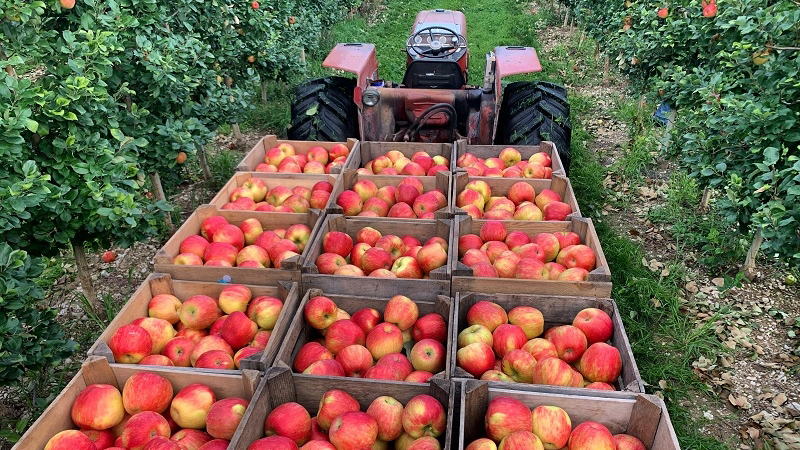Helping Grapes Survive During The Winter

|
|
|
|
One of the biggest challenges for grape growers in many parts of the U.S. east of the Rockies is getting the vines and buds to survive through the winter. In some parts of the country, winter injury is caused by early warm temperatures that start to bring vines out of dormancy, followed quickly by very cold air that then kills buds, fruiting canes, or even whole vines. This is what happened in many parts of the Midwest and Mid-Atlantic grape regions in early 2007.
In more northerly climates, the major problem is that it just gets flat-out cold. If vines experience temperatures lower than they are able to acclimate to, the membranes around cells and their organelles are ruptured and the cells die. This can happen to tissues in the dormant buds as well as in the vascular system that moves water and nutrients through the plant.
As I write this in mid-January, much of the country is in the midst of a major cold spell, with temperatures expected to go below zero in many areas for a couple of nights. For some varieties that are grown in Eastern North America, this is no big deal, as they are adapted to, or were bred for, tolerance to cold temperatures. But every variety, even those bred to withstand winters in Minnesota, has a point beyond which winter temperatures can cause damage.
Viticulture research and Extension programs in some of these colder regions monitor the hardiness of grape buds each winter to determine what temperatures would cause significant damage to buds of different varieties. But doing this takes some serious equipment like a programmable freezer and sensitive thermocouples to which growers don’t have access.
While growers can’t control the weather, they do have some control over their vines’ ability to survive through the winter with minimal damage. Some of the decisions and practices that can make a difference include:
• Site and variety selection — Probably the most important factor in the potential for winter injury is determined before the vines are even in the ground. For example, vineyards planted in low areas or on heavy soils that are often waterlogged will be more susceptible to injury. Varieties with better cold hardiness and the installation of drainage, respectively, should be considered in these situations.
• Crop level — Vines that are overcropped may not be able to properly acclimate themselves for winter dormancy. Vines that are undercropped will often have excessive vegetative vigor and create heavily shaded canopies, which will both decrease fruit quality and increase the potential for winter injury.
• Pest management — Significant injury to leaves by insects or diseases can impact winter hardiness by reducing the amount of active leaf area conducting photosynthesis, and therefore reducing carbohydrate reserves which are needed for optimal winter hardiness.
Growers can also adapt their pruning practices depending on the amount of damage that is found when buds are sampled to determine the level of winter injury. Delaying pruning until the threat of damaging cold temperatures has passed allows growers to retain a number of buds that compensates any winter damage. The number of extra buds that are kept per vine depends on the amount of damage that is observed in the samples taken from that particular vineyard.
While growers can’t do anything about the weather itself, making good vineyard management decisions, even before the vines go in the ground, can go a long way in minimizing the impact of winter injury on a vineyard’s productivity and profitability.
Healing The Wounded
Use the following protocol to determine the level of winter injury in a particular block:
1. Collect 100 buds from the block. Make sure that the buds sampled are representative of buds that would normally be kept when pruning.
2. Bring them inside to warm for 24 to 48 hours. This will allow time for tissues that have been injured to desiccate, and make it easier to differentiate between healthy and injured buds.
3. Use a sharp razor blade to cut cross sections of the bud until you can tell if the large primary bud is healthy or injured (see photos). Count the number of dead or injured buds, and divide by the total number of buds sampled to get the percentage of injury.
Based on these results, adjust the number of buds per vine accordingly:
• 0% to 14% bud mortality: No adjustment necessary
• 15% to 34%: Retain 35% more buds
• 35% to 50%: Double the number of buds
• 50%-plus: Minimal or no pruning.
Source: Zabadal, T., et al. “Winter Injury to Grapevines and Methods of Protection,” Michigan State University Extension Bulletin E2930 (June 2007).









